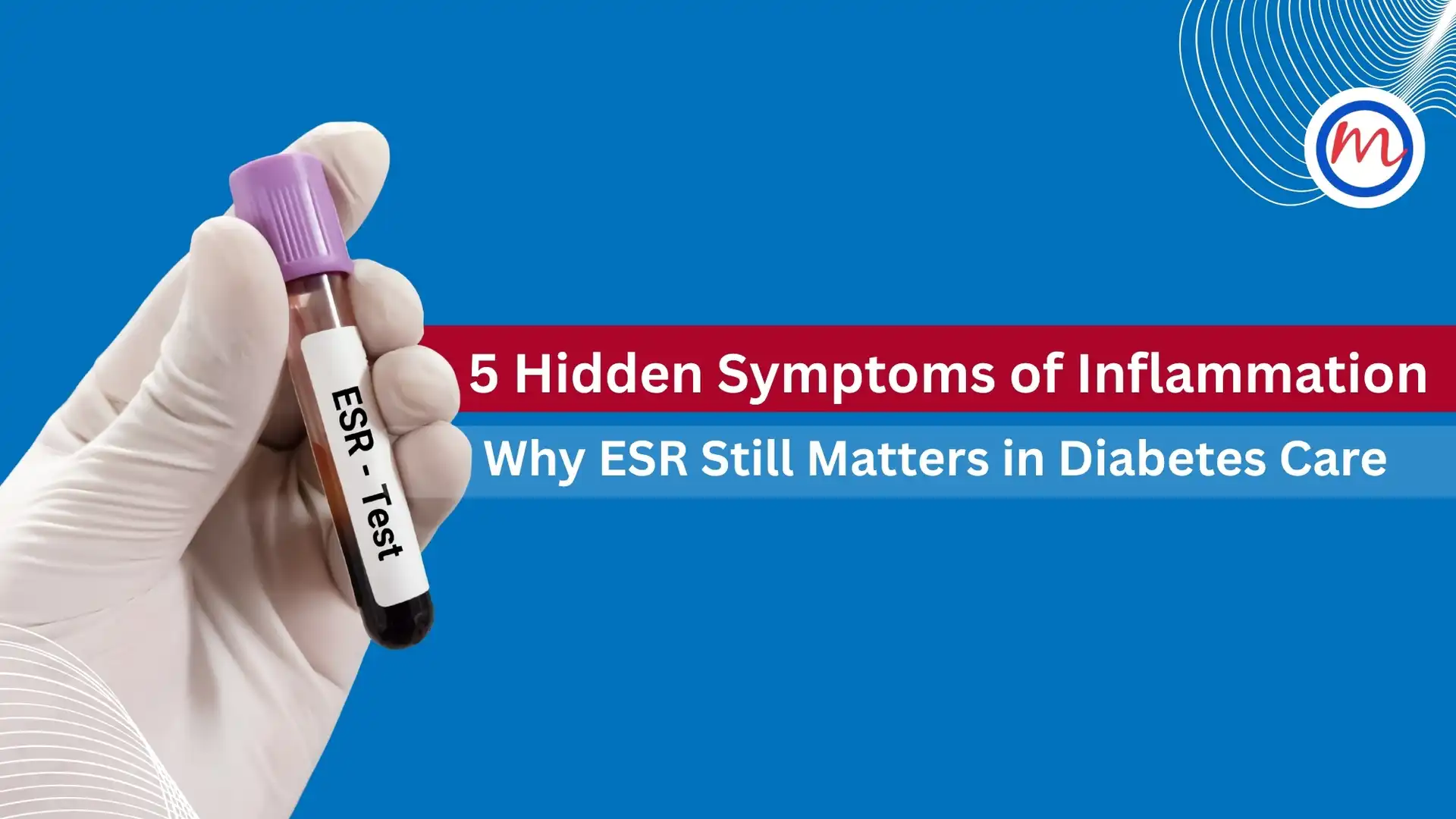5 Hidden Symptoms of Inflammation – Why ESR Still Matters in Diabetes Care
Inflammation is the root cause of many complications in people with diabetes, from heart disease and kidney damage to joint pain and infections. Yet, chronic inflammation can silently smoulder in the body without obvious signs. One of the simplest ways to detect it? The ESR (Erythrocyte Sedimentation Rate) test.
The ESR test measures how quickly red blood cells settle at the bottom of a test tube. A faster rate often indicates underlying inflammation, infection, or autoimmune activity. Though non-specific, it is a powerful early warning sign, especially for individuals with long-standing diabetes.
Here are 5 hidden symptoms that could mean inflammation is brewing, and why ESR still plays a vital role in your health check.
-
Persistent Body Aches or Joint Stiffness
Inflammation in the joints, especially in the shoulders, knees or fingers, could point to early arthritis or diabetic complications like frozen shoulder or neuropathy.
An elevated ESR often confirms that these pains aren’t just “age-related.”
-
Unexplained Fatigue or Malaise
When your immune system is always slightly activated, it drains your energy. Chronic inflammation can cause:
- Sluggishness
- Muscle fatigue
- Generalised weakness
Feeling tired for no reason? Your ESR might hold the clue.
-
Slow Healing of Wounds or Sores
If cuts or foot ulcers are taking longer than usual to heal, this could indicate systemic inflammation or infection — both of which raise ESR levels.
In diabetes, a slow-healing wound is a warning sign, not a minor issue.
-
Unexplained Fever or Weight Loss
Mild fever or weight loss without trying can be signs of chronic infection or inflammatory disease. ESR helps screen for conditions like:
- Tuberculosis
- Rheumatoid arthritis
- Hidden infections
ESR gives doctors an important starting point for further investigation.
-
You are Prone to Infections or Have an Autoimmune Disorder
People with diabetes are at higher risk of immune dysfunction. An elevated ESR may reflect:
- Low-grade urinary infections
- Diabetic foot infection
- Autoimmune disease
Monitoring ESR helps detect flare-ups early, before complications escalate.
📊 ESR Reference Values
| Category | ESR (mm/hr) |
| Normal (Men) | 0 – 15 |
| Normal (Women) | 0 – 20 |
| Mild Elevation | 20 – 40 |
| High Elevation | 40+ (may indicate serious inflammation) |
Note: ESR is non-specific and used alongside other tests for diagnosis.
Catch Inflammation Before It Catches You
At Dr. Mohan’s Diabetes Specialities Centre, ESR testing is included in our comprehensive diabetes packages to help detect hidden inflammation, infections, and long-term risks.
Visit us for more: https://drmohans.com/lab/
Book your health package now: https://drmohansdiabetes.co.in/dmdsc_packages/?package=DMD1504



